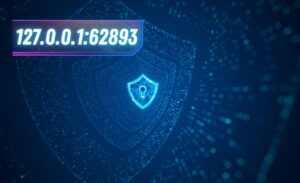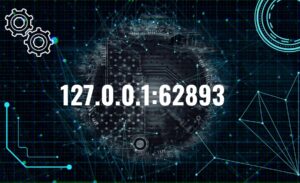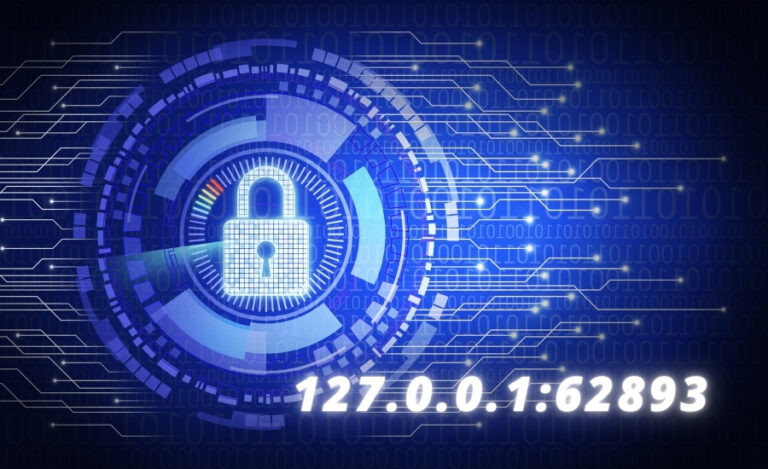The address 127.0.0.1:62893 may appear cryptic at first glance, but understanding its significance is vital for anyone involved in software development, networking, or IT troubleshooting. This article will break down the meaning of 127.0.0.1:62893, explore common errors associated with it, and provide detailed tips for fixing those errors. By understanding this address, you’ll be better equipped to optimize your network configurations and ensure smooth operations.
What is 127.0.0.1:62893?
Breaking Down the Address
127.0.0.1:62893 consists of two main components:
- 127.0.0.1: Known as the “localhost” or “loopback” address, this IP address points back to your own computer. It’s a special address used to enable communication within your device, allowing various software applications to interact without needing an external network connection.
- 62893: This is a port number. Ports act as virtual doorways through which data enters and exits your computer. In this case, 62893 might be used by specific applications, such as caching systems like Memcached, to handle communication on your machine.
Importance of 127.0.0.1:62893
This address is crucial in several contexts:
- Development and Testing: Developers often use localhost to test applications in a controlled environment. It allows them to identify bugs without exposing the software to external threats.
- Networking: Understanding 127.0.0.1 helps grasp basic networking concepts like client-server communication.
- Security: Monitoring localhost activity can help detect suspicious attempts to access your system.
- Debugging: Localhost can simplify troubleshooting by pinpointing network-related issues.
How 127.0.0.1:62893 Works

When an application on your device tries to communicate with another process, it might use 127.0.0.1:62893 as the destination. Here’s a breakdown of how it works:
- Local Communication: The application specifies “localhost” (127.0.0.1) as the target, indicating it wants to interact with something on the same machine.
- Port Specification: The port number (62893) directs the operating system to the specific service or program intended to handle the communication.
- Example Usage: A development tool might use this address to connect to a local server running on your machine for debugging purposes, enabling a seamless development process without external interference.
Safety Concerns
Exposing port 62893 publicly is generally unsafe due to:
- Security Exploits: Vulnerabilities in software running on this port can be exploited by attackers.
- Denial-of-Service (DoS) Attacks: Hackers can target the port with DoS attacks, overwhelming and crashing your system.
- Unauthorized Access: Open ports may allow unauthorized access, increasing security risks.
May You Also Like: Silktest-Org-peter-Hollingsworth-Contact
Common Errors Related to 127.0.0.1:62893

Encountering errors with 127.0.0.1:62893 is not uncommon. Here are some typical issues and their causes:
1. Connection Errors
- Misconfigurations: Incorrect application or port settings may prevent successful connections.
- Software Bugs: Errors in the software trying to use this address can cause failures.
- Port Conflicts: If another application is using the same port, conflicts may arise, leading to errors.
2. Firewall and Security Software
- Blocking Ports: Firewalls or security software might block traffic to port 62893, hindering connections.
- Configuration Issues: Misconfigured firewall rules can disrupt the intended communication.
3. Network Interface Problems
- Loopback Interface Issues: Problems with the network loopback adapter can affect localhost operations, causing disruptions.
4. Application-Specific Bugs
- Incomplete Code: Bugs in the code trying to access this port may result in errors.
- Incompatibilities: Software incompatibilities with other applications or the operating system can cause failures.
How to Fix 127.0.0.1:62893 Errors
Solving errors associated with 127.0.0.1:62893 requires a systematic approach. Here are some effective strategies:
1. Verify the Service
Ensure that the application or service you’re trying to access is running correctly. Restarting the service may resolve temporary glitches.
2. Check Port Number
Double-check that the application configuration matches the port number (62893) and is set up to handle requests on this port.
3. Configure Firewall and Security Settings
- Allow Port Traffic: Ensure that your firewall allows traffic on port 62893 for local connections. Create an exception rule if necessary.
- Windows Firewall: Go to Control Panel > System and Security > Windows Defender Firewall > Advanced Settings > Inbound Rules. Create a new rule for port 62893.
- Mac/Linux Firewall: Use terminal commands like iptables to configure the firewall.
4. Identify Port Conflicts
Use tools like netstat (Windows) or lsof (Unix/Linux) to see if another application is already using port 62893. Adjust port assignments if conflicts are found.
5. Update Software and Drivers
Outdated software or drivers may cause compatibility issues. Ensure all components, including the operating system, network drivers, and applications, are up to date.
6. Check Network Interface
Validate the loopback interface’s configuration. Ensure it’s set up correctly and operational, as it’s vital for localhost communication.
7. Debug Application-Specific Issues
- Review Logs: Examine application logs to identify specific error messages or warnings.
- Apply Updates: Install patches or updates to address known bugs.
- Debugging Tools: Utilize debugging tools to trace and resolve code issues.
8. Consult Support
If the problem persists, seek assistance from the application’s support team or documentation. They may provide tailored solutions based on specific software needs.
Practical Example: Fixing the “Disconnected from the target VM, address: 127.0.0.1:62893” Error

This error often occurs when using development tools like Visual Studio Code (VS Code), indicating that the debugger couldn’t connect to the target machine at the specified port.
Solution Steps:
- Start the Service: Ensure that the service or application intended to listen on port 62893 is active.
- Verify Configuration: Check that the application’s settings align with the expected port number.
- Adjust Firewall: Ensure your firewall permits traffic to port 62893 for local connections.
- Change Port Number: If conflicts persist, consider changing the port number to an unused one.
Advanced Tips for Managing 127.0.0.1:62893
Use Network Diagnostic Tools
- Wireshark: Analyze network traffic to understand how data flows through port 62893.
- tcpdump: Use this command-line packet analyzer to monitor network activity on specific ports.
Implement Security Best Practices
- Close Unused Ports: Regularly review open ports and close those that are not in use to minimize attack vectors.
- Use Strong Authentication: Implement robust authentication mechanisms for applications using port 62893.
Optimize Development Environment
- Containerization: Use tools like Docker to create isolated environments for development, reducing the risk of conflicts.
- Virtualization: Employ virtual machines to simulate different network conditions and test applications comprehensively.
Conclusion
Understanding 127.0.0.1:62893 is vital for anyone involved in software development, networking, or IT troubleshooting. This address plays a crucial role in enabling local communication, testing applications, and ensuring security. By mastering the concepts, common errors, and fixing tips associated with 127.0.0.1:62893, you can enhance your technical skills and provide efficient solutions to network-related challenges.
Whether you’re a developer, network administrator, or IT enthusiast, embracing these insights will empower you to navigate the complexities of localhost communication with confidence and expertise.
FAQs
Q: What is 127.0.0.1:62893 used for?
A: It’s used for local communication within your device, often in development and testing environments.
Q: Can 127.0.0.1:62893 be accessed remotely?
A: No, 127.0.0.1 is restricted to local communications and cannot be accessed from external networks.
Q: How do I find my computer’s IP address?
- Windows: Open Command Prompt and type ipconfig.
- Linux/Mac: Open Terminal and type ifconfig or ip addr.
Q: Can I block a website using localhost?
A: Yes, you can edit your computer’s hosts file to redirect unwanted websites to 127.0.0.1.
Q: Does a system restore fix 127.0.0.1:62893 errors?
A: A system restore may help if recent changes or installations caused the error. It restores settings to a previous state, potentially resolving issues.
Get the latest updates and in-depth coverage on today’s hottest topics at: Dallas Insiders
